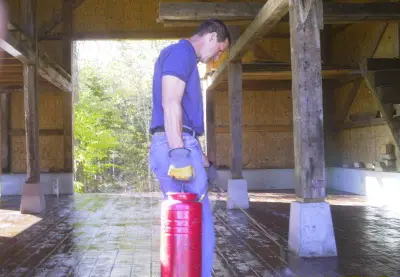CONCRETE SEALANT
PROS AND CONS OF CONCRETE SEALANTS
Concrete sealant is used to protect, cure, and enhance many different types of concrete. Different types of sealants come with their own pros and cons.

The growth of concrete as a finish material for both interior and exterior structures has exploded, especially with decorative concrete.
Planning for the long-term protection and maintenance of finished concrete surfaces should be an important part of any project design and placement process.
Concrete sealers and sealants are applied to concrete to act as a protective layer while safe-guarding the material below. Despite its inherent strength and durability, concrete is a porous material with an absorptive surface, making it susceptible to the intrusion of water, chlorides, oils and other chemical substances.
All these substances can cause damage ranging from surface stains and spalling to internal corrosion of reinforcing steel. By treating concrete with a sealant, the harmful effects of these liquids can be prevented or at least reduced.
Concrete sealants are also used to enhance the appearance of concrete, highlighting colors and textures with finishes ranging from matte to gloss.
This page will explain the different concrete sealant options, pros and cons of each, and provide guidelines for sealant selection. You can click on each one for a more in depth explanation of when to use these sealants.
PROS - Cure & seal sealants are film forming, topical, sealers that block penetration of water and contaminants by forming a barrier on the surface of the concrete. Cure & seals can be applied to fresh concrete to help retain moisture or applied after the concrete has cured to protect the surface.
The primary purpose of cure & seal sealant is application on fresh concrete, as soon as final finishing has been completed, to form a membrane on the surface that prevents rapid evaporation of the water in the concrete.
CONS - Using cure & seals on concrete that has already cured can pose some issues, especially where the subgrade is damp or on concrete floors where no vapor barrier was used.
The adhesion of cure & seal sealants on hardened or cured concrete surfaces can fail due to moisture vapor transmission, causing a multitude of problems from whitening of the sealant to flaking or peeling of the membrane.
EPOXY AND URETHANE CONCRETE FLOOR SEALANTS
PROS - Epoxy and urethane sealants are used to protect concrete when exceptional abrasion and chemical resistance, increased service life and a high gloss finish are needed.
CONS - Epoxy and urethane sealants can blister or peel if there is moisture in the concrete. Most urethane sealants do not bond well to concrete and must be used in conjunction with an epoxy primer.
PENETRATING CONCRETE FLOOR SEALANTS
PROS - Penetrating sealants soak into the concrete surface to a depth of 1/8 inch to increase water repellence and stain resistance on porous concrete while remaining breathable so water vapor within the slab can evaporate through the surface.
Penetrating sealants provide protection without changing the appearance of the surface.
CONS - Because penetrating sealants soak in and do not leave a film or membrane on the surface, they do not enhance the appearance or prevent staining as effective as a film forming sealant.
WATER BASED SEALANTS VS SOLVENT BASED SEALANTS
The importance of using environmentally friendly cement sealants has made water-based sealants a popular option for protecting concrete.
Unlike solvent based sealants, water based sealants are sensitive to the environment during application and in service.
At cool temperatures or during high humidity conditions, water will evaporate very slowly from freshly applied water based sealants, resulting in poor film formation. This problem will show in the form of a milky white appearance or a weakly bonded, powdery film.
Water based sealants are also susceptible to performance problems when applying them in wet conditions, like a day it rains right after application.
Low-VOC sealants based on exempt solvent technology are also available and often preferred for sealing exterior concrete. Exempt solvents, such as acetone and tertiary-butyl acetate, dry very quickly making application of sealants containing these solvents quite difficult, especially in warm temperatures.
Exempt solvent sealants are not sensitive to moisture and humidity like water based sealants and can be used in cold weather conditions.
Selecting and applying the right protective concrete sealant is very important to optimize the service life of the concrete. Hopefully, the information here has helped you choose the best concrete sealant for your situation.
Return from Concrete Sealant to Concrete Floors
Return from Concrete Sealant to Everything About Concrete Home Page














